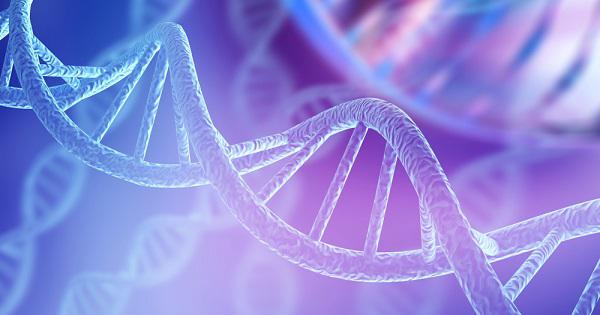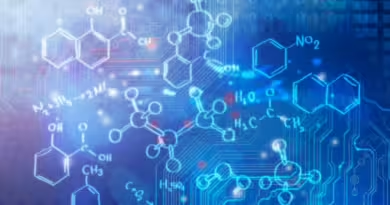Genetics and the Environment: Epigenetics in Rheumatism
First discovered by Hippocrates, rheumatism is a class of autoimmune diseases affecting the tendons, joints, muscles, bones, and ligaments (“Rheumatic Diseases and Pain”; Sangha 3). Rheumatic diseases, such as spondyloarthritis, have been found to mainly depend on genetic factors (Aslani et al. 48). Most notably, the B27 allele of the human leukocyte antigen gene (HLA-B27) is found to have a significant correlation with both rheumatoid arthritis and spondyloarthritis (Bowness 29; Koh et al. 32). However, it does not guarantee that the disease will develop; only around 20% of individuals possessing the HLA-B27 allele show symptoms of rheumatoid arthritis. Additionally, genetics is not the sole factor influencing rheumatism. Factors like smoking, protein consumption, and high birth weight have all been associated with a higher risk of rheumatoid arthritis (Liao et al. par. 5-14). In recent years, epigenetics, or the study of how DNA and related molecules are modified to regulate gene expression, has shone light on how genetic components interact with environmental factors to cause rheumatism.
The HLA-B27 allele is theorized to cause rheumatism through the methylation of DNA (Cherqaoui et al. par. 25-27; Coit et al. 126). DNA methylation is when a methyl group is added to the nucleic acid cytosine (Cherqaoui et al. par. 4-5). Occurring mostly on promoters, DNA methylation can silence genes or lead to transcription elongation. Carrying the HLA-B27 allele has been linked to a decrease in methylation of genes like HCP5, TBCA, and PLD6TF-8 in ankylosing spondylitis patients (Coit et al. 126). In particular, HCP5 has been shown to have a role in promoting autoimmune conditions (Kulski 480). Such epigenetic modifications are theorized to be the cause of rheumatism in HLA-B27-positive individuals, including my grandfather and uncle. A couple of years ago, my grandfather was diagnosed with relapsing polychondritis, a rare rheumatic disease that involves inflammation of multiple systems (Trentham and Le 114; Kingdon et al. 1525). Later, my uncle developed gout, another rheumatic illness, having inherited the HLA-B27 allele.
However, such occurrences were likely not solely based on genetics; gout, for instance, is associated with the high consumption of red meat (Torralba et al. 499). Just as genes such as HLA-B27 can elicit epigenetic modifications in other genes, epigenetic changes originating from environmental factors can also influence gene expression. This suggests that the epigenetic impacts are bi-directional; they can be caused by particular alleles or the patient’s environment. In particular, the IL-23R allele of the IL-23 gene has been seen to cause the proliferation of T cells, a type of immune cells, likely leading to ankylosing spondylitis. However, this proliferation only occurs in the presence of the H3K4me1 histone modification (Cherqaoui et al. par. 28-29). A histone modification is similar to a DNA modification in that they are both epigenetic changes where a functional group like a methyl, acetyl, or phosphoryl group is attached. However, histone modifications happen on a DNA-packing protein, instead of on the DNA itself. This can influence the transcription frequency of genes, such as the IL-23 gene. Histone modifications can be caused by environmental factors, like dietary habits. For example, a correlation between a high fat diet and the H3K4me1 modification has been observed in mice (Terashima et al. 861).
Such environmental influences on gene expression can permanently change the occurrence and course of rheumatism. Like in many illnesses, smoking is thought to be the greatest environmental risk factor for rheumatoid arthritis. In addition, an interaction between the HLA-B27 allele and smoking is suggested due to a 21-fold increased risk of rheumatoid arthritis in individuals with both traits compared to those with neither (Liao et al. par. 5). Other risk factors include air pollution, high sodium and red meat consumption, and obesity. Conversely, a healthy diet rich in omega 3 fatty acids from fish and with moderate alcohol use has been associated with a lower risk, as omega 3 fatty acids have been theorized to have immunomodulatory properties (Deane et al. 3-18; Kostoglou-Athanassiou et al. 190).
As such, rheumatism is the result of a delicate interplay between one’s genetics and environmental factors such as one’s diet. Alleles like HLA-B27 can modify gene expression through epigenetic measures such as DNA methylation, leading to rheumatism, while environmental and lifestyle factors, including diet and smoking, can also induce epigenetic effects via histone modification. In the end, the unique combination of one’s environmental and genetic influences interact in the epigenetic realm to determine whether he or she would develop rheumatism and other similar diseases.
Works Cited
Aslani, Saeed, et al. “Genetic and epigenetic etiology of autoimmune diseases: lessons from twin studies.” Rheumatology Research, vol. 3, no. 2, 2018, pp. 45-57. Rheumatology Research, https://doi.org/10.22631/rr.2018.69997.1041.
Bowness, Paul. “HLA-B27.” The Annual Review of Immunology, vol. 33, 2015, pp. 29-48. The Annual Review, https://doi.org/10.1146/annurev-immunol-032414-112110.
Cherqaoui, Bilade, et al. “Epigenetics of spondyloarthritis.” Joint Bone Spine, vol. 87, no. 6, 2020, pp. 565-571. Science Direct, https://doi.org/10.1016/j.jbspin.2020.06.003.
Coit, Patrick, et al. “Genome-wide DNA methylation analysis in ankylosing spondylitis identifies HLA-B*27 dependent and independent DNA methylation changes in whole blood.” J Autoimmun., vol. 102, 2019, pp. 126-132. National Library of Medicine, https://doi.org/10.1016/j.jaut.2019.04.022.
Deane, Kevin D., et al. “Genetic and environmental risk factors for rheumatoid arthritis.” Best Practice & Research Clinical Rheumatology, vol. 31, no. 1, 2017, pp. 3-18. Science Direct, https://doi.org/10.1016%2Fj.berh.2017.08.003.
Kingdon, Jack, et al. “Relapsing polychondritis: a clinical review for rheumatologists.” Rheumatology, vol. 57, no. 9, 2018, pp. 1525-1532. Oxford Academy, https://doi.org/10.1093/rheumatology/kex406.
Koh, Hee Kwan, et al. “Association Between HLA-B27 and Rheumatoid Arthritis.” Korean College of Rheumatology, vol. 3, no. 1, 1996, pp. 32-40. Journal of Rheumatic Diseases, https://www.jrd.or.kr/journal/view.html?pn=vol&uid=63&vmd=Full.
Kostoglou-Athanassiou, Ifigenia, et al. “The Effect of Omega-3 Fatty Acids on Rheumatoid Arthritis.” Mediterr J Rheumatol, vol. 31, no. 2, 2020, pp. 190-194. National Library of Medicine, https://doi.org/10.31138%2Fmjr.31.2.190.
Kulski, Jerzy K. “Long Noncoding RNA HCP5, a Hybrid HLA Class I Endogenous Retroviral Gene: Structure, Expression, and Disease Associations.” Cells, vol. 8, no. 5, 2019, p. 480. National Library of Medicine, https://doi.org/10.3390%2Fcells8050480.
Liao, Katherine P., et al. “Environmental influences on risk for rheumatoid arthritis.” Curr Opin Rheumatol, vol. 21, no. 3, 2009, pp. 279-283. National Library of Medicine, https://doi.org/10.1097%2FBOR.0b013e32832a2e16.
“Rheumatic Diseases and Pain.” Centers for Disease Control and Prevention, 15 August 2022, https://www.cdc.gov/arthritis/communications/features/rheumatic-diseases-and-pain.html. Accessed 20 February 2024.
Sangha, O. “Epidemiology of rheumatic diseases.” Rheumatology, vol. 39, no. 2, 2000, pp. 3-12. Oxford Academy, https://doi.org/10.1093/rheumatology/39.suppl_2.3.
Terashima, Minoru, et al. “Effect of high fat diet on paternal sperm histone distribution and male offspring liver gene expression.” Epigenetics, vol. 10, no. 9, 2015, pp. 861-871. Taylor & Francis Online, https://doi.org/10.1080/15592294.2015.1075691.
Torralba, Karina D., et al. “The interplay between diet, urate transporters and the risk for gout and hyperuricemia: current and future directions.” International Journal of Rheumatic Diseases, vol. 15, no. 6, 2012, pp. 499-506. Wiley Online Library, https://doi.org/10.1111/1756-185X.12010.
Trentham, David E., and Christine H. Le. “Relapsing Polychondritis.” Annals of Internal Medicine, vol. 129, 1998, pp. 114-122. American College of Physicians, https://doi.org/10.7326/0003-4819-129-2-199807150-00011.




Thank you for writing this article. I appreciate the subject too.